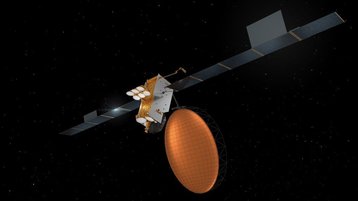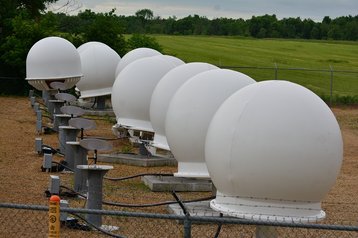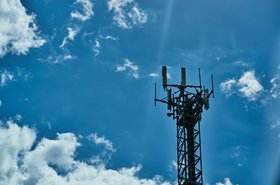Inmarsat’s new I6 F2 geostationary (GEO) satellite has suffered a power issue.
The satellite company said this week that the new machine suffered a “power subsystem anomaly” during its orbit raising phase.
“At this stage, Viasat and Airbus, the satellite's manufacturer, are working to determine the root cause of the anomaly and assess whether the satellite will be able to perform its mission,” the company said. “Airbus has advised that this anomaly is an unprecedented event; none of its geostationary telecommunication satellites have ever suffered a failure in orbit.”
The 5.47-ton I6 F2 – based on Airbus Defence and Space's Eurostar E3000e platform – was launched in February 2023 and set to have a 15-year lifespan. The satellite was set to offer four Gbps of additional Ka-band capacity to Inmarsat’s network as well as L-band services over the Atlantic. The satellites are billed as part of Inmarsat’s upcoming Orchestra network.
Inmarsat said ongoing customer services were not impacted, and the manufacturing and launch costs of the I6 F2 satellite were insured. Industry reports suggest the satellite was valued at around $350 million.
"I6 F2's initial mission was essentially to provide spare L-band and four Gbps of additional Ka-band capacity, consistent with deploying and operating a resilient, redundant network," said Mark Dankberg, chairman and CEO, Viasat.
The company said the twin Inmarat-6 F1 satellite (I6 F1), which was launched in December 2021, is operational and continues to perform as expected.
This is the third issue with newly-launched geosatellites in recent months.
Viasat – which acquired Inmarsat in 2021 but closed the deal in June – saw its new ViaSat-3 satellite suffer an "unexpected event” during reflector deployment.
Astranis’ debut Arcturus satellite – launched aboard the same rocket as ViaSat-3 – also suffered a power issue with the system that controls its solar panels. Astranis is launching a multi-mission ‘UtilitySat’ to offer reduced-capacity services in Arcturus’ wake until a full replacement can be deployed.
In other satellite news:
- The 27 nations of the European Union have committed to a US-led proposal not to conduct anti-satellite (ASAT) missile tests. 35 nations – though not ASAT-equipped Russia, India, or China – have joined the pledge.
- SpaceX – which is reportedly profitable now, according to the WSJ – is partnering with CDN provider Cloudflare to speed up its Starlink satellite broadband speeds.
- IIJ, which has deployed a micro data center (MDC) at a hydroelectric power station in Iceland, has deployed a Starlink terminal connected to the MDC.
- Kenyan telco Karibu Connect is now a reseller of Starlink services.
- South Africa regulator ICASA has told local telco supplier IT Lec to stop selling Starlink terminals as the satellite services don’t yet have a license to operate in the country.
- Omnispace has told the FCC that SpaceX and T-Mobile’s planned direct-to-cell service will "constantly" interfere with its own S-Band-based 5G LEO operations.
- Hughes, Intelsat, and OneWeb are amongst those awarded a five-year, Indefinite Delivery Indefinite Quantity (IDIQ) contract by the US Space Force. The multi-award, multi-participant contract is part of the Proliferated Low Earth Orbit (pLEO) program and is valued up to $900 million over 10 years.
- Laser communications firm Mynaric has won a contract from the Space Development Agency to design an optical ground station.
- Sidus Space, a satellite manufacturing and space services company, is acquiring Exo-Space. A provider of Edge Artificial Intelligence (AI) software and hardware for space applications. Terms of the deal weren’t shared.
- Lynk has conducted a test of its direct-to-cell satellite service in Indonesia in partnership with the Ministry of Communication and Informatics.
- Ofcom is proposing to make more spectrum in the UK available to satellite companies. The regulator is suggesting marking 448MHz of the spectrum frequency in the 28GHz band (27.5–30GHz) available to satellite broadband services for Earth station gateways.
- SES and Philippines telco We Are IT (WIT) are to deliver connectivity services via the SES-9 satellite to 43 Filipino Commission of Elections (COMELEC) offices.
- SES recently inaugurated O3b mPOWER satellite terminals on the Galapagos islands. Using the satellite service, local telco CNT will increase its capacity to 2.5 gigabits, almost doubling Internet speeds on the islands. SES’s previous-generation O3b satellites have been providing services to the islands since 2015.








